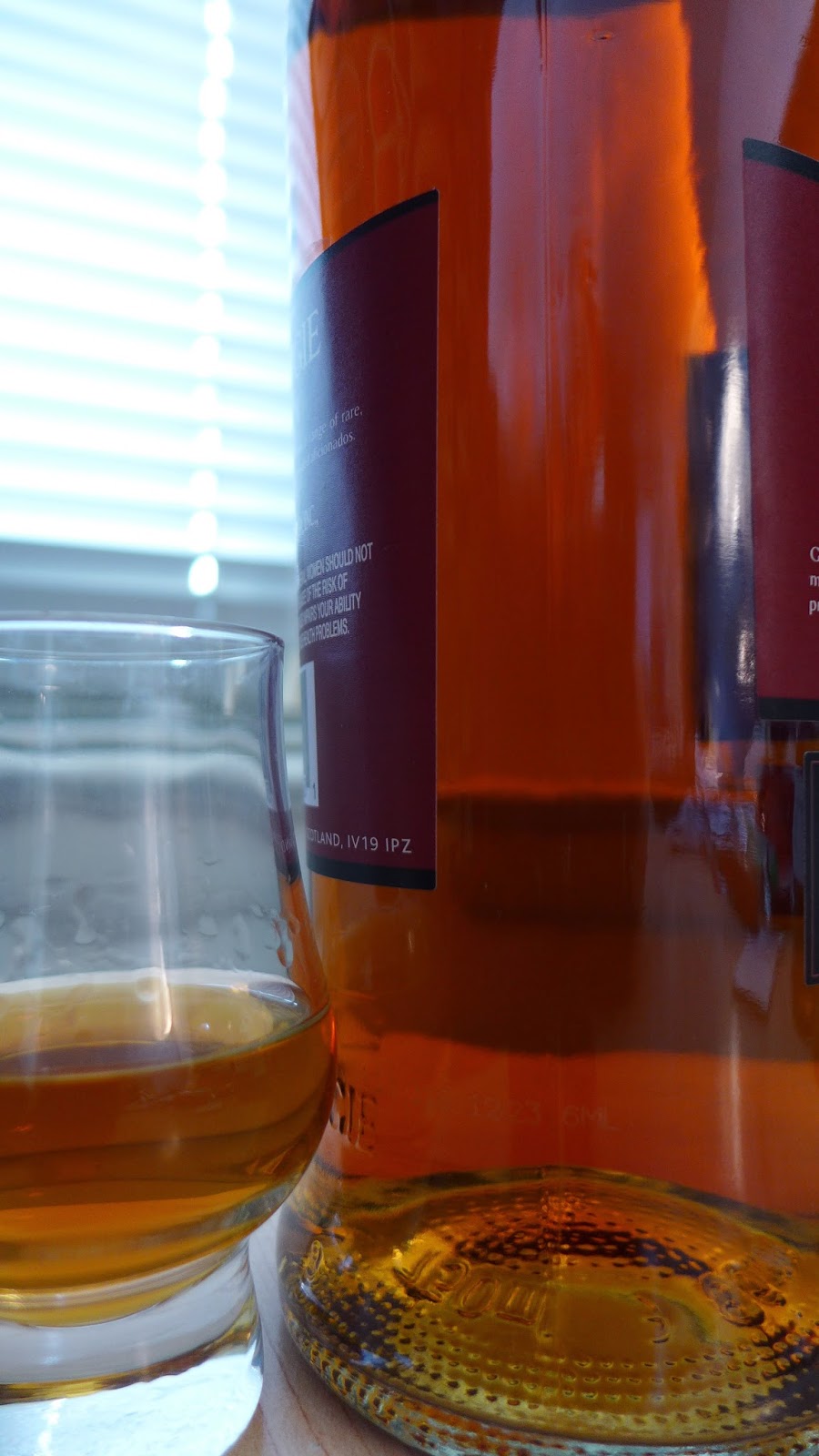Red wine finishes are familiar terrain for Lumsden and Glenmorangie. In the mid-90s he started the mania for wine barrel finishing with Madeira, Port, and Sherry finished expressions. This led directly to the Sauternes finished Nectar D'Or and famous special wine finished editions from Chateaux Margeaux (a Bordeaux) and the legendary 1975 & 1978 vintage Tain L'Hermitage finished bottling made with casks from the Côtes du Rhône region. Later there was a regular OP Burgundy cask finished version and a more focused Burgundy edition that specified Côtes de Beaune cask finishing. That's a lot of history with using casks, or "Barriques", Lumsden specifies with characteristic precision and excellent brogue.
This fascination with red wine hasn't always been well received by everyone and, at a launch event for Companta at New York's Brandy Library, Lumsden alluded to the risks of tartness and possibility of the wine overpowering the delicate stone fruit and floral nature of Glenmorangie's distillate. With Companta, Lumsden has taken two dramatically contrasting wines from them same Côtes du Rhône Burgundy region.
60% of Companta is from a big tart pinot noir "Clos du Tart". Lumsden took 1999 vinage ex-bourbon barrel aged Glenmo which was 9 years old in 2008 and then aged it for an addition 5 years in Clos du Tart for a total age of 14 years.
 |
| Clos du Tart 2004 Burgundy |
Glenmorangie Companta 46% abv.
Color: russet medium amber, with pink, copper, and gold tints. It's brick red and pink and honey caramel color. One of the more appetizing colors in the bottle and the glass that you'll ever see.
 |
| Companta's color is extraordinary |
Nose: Creamy berry tart with darker notes of chocolate dipped raspberry on rich honey malt. Undertones of forest floor loam, strawberry jam, and earthy sweet and elegant oak. It's an interesting an involving nose.
Palate: This isn't a whisky where the nose outshines the palate. The opposite is true. At 46% there is enough intensity for sweetness and fruity acids to pop brightly on entry. The entry is full of milk chocolate, tart raspberry acid-sweet with notes of currant and malted milk with floral vanilla and creamy fudge. The raspberry tartness deftly evokes the rich acid fruit of the Clos De Tart. There's a good balance between sweet and dry going on. The creamy vanilla floral raspberry tart fruited entry opens into a taut and elegant mid palate expansion full of darker malt, dark chocolate, cocoa, and black currant fruit notes. Thanks to the wine tasting portion of the launch event I can recognize the black currant herbal sweetness as coming from the rich port-like Rasteau (which really comes off as a Port that tastes more of currants than of grapes). In the mid-palate expansion you can clearly taste the nectarine stone fruit flavors of the Glenmorange distillate itself. Plus undefined additional notes of herbal brush and animal musk. The finish is medium long with lingering fruit skin tartness, pepper heat, cocoa dust, and tannin that reads both of oak and wine.
 Companta needs air to open, and takes water well. Water increases the estery, sweet, and fruity aspects, and the milk chocolate covered raspberry note even while upping the spicy finish.
Companta needs air to open, and takes water well. Water increases the estery, sweet, and fruity aspects, and the milk chocolate covered raspberry note even while upping the spicy finish. Companta is a Valentine. A red fruit covered in chocolate - a kiss of sweet from a taut lithe body. This might be the best one yet. Bottom line - as soon as I saw a bottle I bought it and cracked it.
*****
(Sample provenance disclosure: The bottle tasted for this review was purchased at Bottle King, Bloomfield, NJ with my own funds. I had previously attended the launch event as the guest of the BA.)
FYI - the prior 4 limited Glenmorangie editions:
- Sonnalta PX (Pedro Ximinez, 2009),
- Finealta (kiss of sherry and of peat 2010),
- Artein (Italian "Sassicaia" Super Tuscan cask finish, 15 years old, 2012),
- Ealanta (virgin toasted oak - 2013)





No comments:
Post a Comment